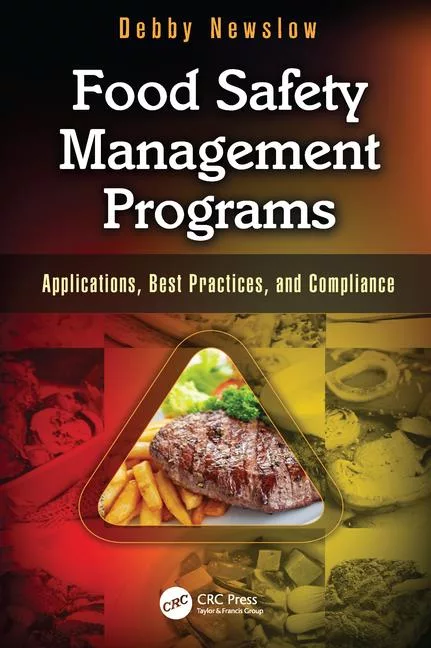What Food Professionals Can Learn From GM about Internal Safety Communications

Media fiascos are especially gruesome when self-inflicted. The public has just witnessed a case in point with the debacle of General Motors’ (GM) public castigation in the wake of it enormous vehicle recall. On May 16, 2014, the National Highway Traffic Safety Administration (NHTSA) and GM entered into a consent judgment that fined GM $35,000,000—the maximum allowed by law—for failing to timely report problems with ignition switches in certain model vehicles. The fine, however, is just one part of the consent order. The order also includes some very extensive measures requiring GM to implement internal communication practices that allow the quick identification and reporting of safety problems.
In the food industry, as in the automotive industry, internal vigilance for product safety is imperative: The lives and health of customers depend on it. So does brand reputation. The GM story may not have fully run its course, but already it provides a text book example of what to do, and what not to do, when communicating internally about safety issues. Food safety personnel, and their counsel, can view GM’s experience and draw some very important lessons about how to address safety issues while reducing the risk that internal communications will assist prospective litigants bringing legal claims against food companies.
The Misery of Exhibit B
A central focus of NHTSA’s wrath was attached as Exhibit B to the consent order. It was a 48 slide WebEx, delivered at an internal GM technical symposium in 2008, which said absolutely nothing about the ignition switches. Rather, it provided GM engineers with pointers on investigating and describing safety issues. The presentation took the investigators through several case studies on assorted technical problems that led to recalls, describing root causes and ensuing remedial plans. It then devoted 11 slides to guidelines that told investigators how to describe their safety findings in writing. The attachment of these guidelines to the consent order on NHTSA’s website, and in countless media outlets, proved that there really were “no secrets” at GM. The consent order required GM to improve employee training, and directed that “such training will specifically disavow statements diluting the safety message in the nature of certain statements in pages 33–44 of the attached Exhibit B.”
How Not to Shoot Yourself in the Foot
In the food industry, communications with implications for product safety occur every day. Food production is a scientifically and procedurally complex process, with many individual steps occurring between when a food leaves the farm and the time it winds up in a grocery bag. All along the way, those who bring the food to market write and talk about food safety. Their key objectives are to produce food that matches its label description, that does not make anyone sick, and that customers like well enough to buy again. The number of occasions where food industry professionals will discuss safety is virtually limitless.
By way of example, food professionals will talk about the safety of food facilities when they complete their routine documentation of Good Manufacturing Practices: Are transport or production facilities in a clean and sanitary condition when foods are received? They will talk about the safety of processing procedures when they create and modify Hazard Analysis and Critical Control Points plans: Have they identified the places where pathogens, foreign materials or other hazards might enter the food? Have they created effective controls to mitigate the risk? They will talk about the safety of the manufacturing environment when they create hygienic zoning plans: Have they correctly identified the flow of personnel and materials that might transport product hazards into food contact areas? Have they created zoning systems to shield food production areas from these hazards? They will talk about the safety of facilities and equipment when they create sanitation plans: Have they created robust systems, with effective cleaning agents, to ensure that work areas and equipment do not contaminate food as it passes through the facility? They will talk about safety when they create employee training programs that educate employees about the safety requirements of their jobs. They will talk about safety when they develop and implement product testing programs that looking for pathogens, foreign materials or hygienic indicators in foods.
As at GM, food manufacturers also have employees or contractors with technical training whose job it is to go looking for issues with food quality and safety: Is the facility making products under conditions that meet regulatory expectations, internal standards or the general standards of the food industry? This may take the form of manufacturing audits, where employees or third parties will assess facilities against internal or external safety standards. It may take the form of ad hoc investigations of nonconformities, to identify and address conditions that may have caused lot rejections, customer complaints or recalls. These types of evaluation are typically very rigorous, as they are intended to drive continuous improvement. Food companies evaluate the recommendations of these investigations. They may or may not make changes, based on their assessment of the validity of the observations and on whether the proposals will be effective in improving product safety and quality. Food manufacturing is an iterative process, where operations undergo continual review and improvement, not necessarily because existing practices are dangerous, but because science and technology continually yield better ways to do things.
In the world of food manufacturing, as in the world of automobile manufacturing, documents relating to product safety can be written for one audience but later find their way to an entirely different audience. The first audience will usually be other company employees, knowledgeable about the facility and food safety, and whose perception of risks is informed by scientific understanding, historical experience and personal observation. This audience will often have a good understanding of the magnitude and significance of risks, as well as measures to control those risks. This audience will understand the context of an identified risk, and interpret the communication against a sophisticated understanding of the manufacturing process, consumer behavior and epidemiology.
The second audience may be the news media, the general public through social media, or plaintiffs’ lawyers. This audience will usually see internal food industry safety documents under circumstances where something has allegedly gone wrong—someone has gotten sick, a food has been recalled, a law suit has been filed. The second audience will judge the documents from the perspective of hindsight. This audience may have a very different perception of risk, and how food professionals have assessed risk. They will look carefully to see how company personnel have talked about safety in their internal communications. Risk perception in this audience, after the fact, may be far different, and far less charitable, than the risk perception of food safety professionals who evaluated the manufacturing process prospectively. Their risk perception will be more heavily influenced by emotional factors, and less by objective risk assessment.
Food companies thus have many chances to generate documents that can either embarrass them later, or demonstrate that they gave appropriate consideration and priority to food safety. What should food safety personnel learn from GM’s experience? Let’s review.
Lesson One: Safety is Job One
The single biggest problem with GM’s WebEx is that it did not state the most obvious point: Safety is the highest priority of all employees. Perhaps its author believed that the safety objective was already so well known to GM engineers that it did not need to be stated—sort of like telling firemen that their job is to put out fires. Six years later, and read out of context, the WebEx’s lack of a safety admonition sticks out like a sore thumb. The WebEx should have simply reminded personnel of GM’s corporate commitment to safety and underscored that the advice was not intended to limit their vigorous investigation and efforts to address safety problems.
This leads to a key, over-arching point: Concern over lawsuits should never cause a company to avoid making those changes needed to make its products safe. Lawyers can and should help their clients become sensitive to litigation risks, and help them run their businesses in ways that mitigate those risks. This can include educating employees as to best practices for documenting safety issues. But it cannot include minimizing the importance of safety or thwarting safety improvements. Safety professionals have the responsibility to identify and correct safety problems. What food safety personnel should learn is that the goal of product safety can usually be achieved in a way that will not harm the company in the event of litigation. Safety should not be sacrificed for litigation goals, but sensitivity by food safety personnel can advance the goal of safety while minimizing potential harm to the company’s reputation and defense in litigation.
Lesson Two: Every Document Will Be Subject to Publication.
The WebEx advised viewers that there are no secrets at a company like GM. This was absolutely true. In any company, no written communication is ever “off the record.” When litigation arises, a company will often be required to turn over all electronic data within its IT system. Thus, as the WebEx counseled, employees want to be sure that all statements put them in a favorable light, and will not make them cringe if they see them reprinted in a major newspaper. But, as the author of the WebEx has learned to his chagrin, this includes communications about safety communications.
Lesson Three: A Good Company Can Become a Single Bad Document
GM is an iconic American corporation, which has contributed enormously to our economy, technology and culture. It employs many, many engineers who go to work every day with the single purpose of making the best, safest vehicles on the road. Yet a single ill-advised document, that had no direct bearing on the ignition switch issue, has become the focus of administrative enforcement and public revilement. This underscores that care in document creation should matter to every employee, every day, about everything.
Lesson Four: Appropriate Guidance on Word Choice
The motivation for instructing GM engineers on documentation protocols was sound. Its fundamental goal was to encourage accuracy, factual detail and the avoidance of hyperbole and speculation. As long as a company has proper commitment to product safety, it is absolutely appropriate to educate employees about how to fulfill their safety obligations while avoiding terms that could increase liability risks.
Avoiding terms with legal connotations: It is a truism that the same words can mean different things to different people. Words used in safety documents can sometimes be legal terms that have connotations beyond what safety personnel can anticipate. For example, when a food technologist or an automotive engineer uses the terms “defect” or “defective,” he or she probably means that the product has performed in a less-than-optimal manner, or does not meet its specification. The engineer is not necessarily making a judgment that the product meets legal standards of being “unreasonably dangerous” or that its “risks outweigh the utility of its design.” Other words with legal overtones include “consumer expectation,” “failure to…,” “design flaw,” “violation,” “neglect” and “negligence.” A company may well have good defenses to liability claims, but its defense becomes harder if company personnel have unwittingly used legal terms that play into its adversary’s hand. In almost all instances, food safety personnel can find ways to say precisely what they mean, without using legal words that mean more than they intend.
Degree of urgency and level of risk: This is an area where personnel can and should be sensitized to ensuring that their word choice accurately reflects the situation confronting them. When an employee documents a safety problem, the company must deal with it. When the employee documents a safety problem posing an immediate risk to health, the company must deal with it immediately. An employee creates trouble for himself and his company, however, if he characterizes a safety issue as more dangerous or urgent than it really is.
Overstating risk can actually increase risk by creating lack of trust, the dilution of warnings, or by creating organizational paralysis that sticks with the tried and true rather than the new and better. In food manufacturing, where safety systems often have multiple layers of overlapping protection, and where iterative improvements occur over time, not every upgrade or issue potentially associated with food safety will deserve a designation of “code red.”
And, when situations do require immediate attention, personnel should learn to document this in a professional manner that conveys urgency without panic. For example, terms like “top priority,” “highest priority” and “immediate need” convey urgency without using dire adjectives. The goal should be to attain prompt attention, not to relieve emotional pressure.
Avoid speculation: Safety personnel should be able to foresee the consequences of safety problems, as foresight is an important part of hazard identification and remedial action. Still, employees need to know what they do not know and should remember that other professionals in their company may have different but still reasonable assessments. Thus, unless the occurrence of an adverse consequence is a certainty, potential consequences should be denoted as just that, “potential.” Where appropriate, write-ups should allow for possibility of reasonable differences of opinion.
Lesson Five: Power of the Spoken Word
The WebEx observed that in a company as large as GM, the written word is often the primary method of communication. Not all companies are as big as GM, however, and in many instances, the spoken word may offer a better way to discuss risks and remedies.
From the standpoint of getting corporate attention, a conversation may often prove very effective in educating higher ups about safety risks and potential remedies. Conversations allow questions and the sharing of perspectives. In-person discussions are less easy to ignore than emails and less prone to turn confrontational. So, before writing more loudly, consider talking more loudly.
And from the standpoint of reducing litigation risks, conversations do not have the same immutable staying power of written communications and are less prone to misunderstanding. Indeed, because the content of conversations will be elicited through testimony, a company witness can give a contemporaneous explanation of his statements, to counteract any unwarranted inferences.
Lesson Six: Consider the Litigation Context of Your Industry
Many members of the public have likely been horrified that GM would educate its employees about litigation risks, viewing this as proof that GM expects its cars to fail and expects to be sued. In fact, however, the WebEx merely reflects epidemiologic fact and legal reality. Automobiles, no matter how well-built, get into accidents in which people die or sustain injury. The cause of those accidents may, of course, have absolutely nothing to do with the design or manufacture of the vehicle—driver error, the weather, etc. —may all cause the accidents. Nevertheless, where serious injuries and deaths occur, at least some litigation will likely occur. The only question is whether legal responsibility for the injuries will be laid at the manufacturer’s door, or to factors beyond its control.
The food industry operates against a similar background of risk. According to the U.S. Centers for Disease Control and Prevention, every year, hundreds of thousands of people develop illnesses involving pathogens associated with food. Some illnesses are very serious, and several thousand people die. Again, this is simple epidemiologic fact. The food industry is much more decentralized than the auto industry, such that many companies will go years without seeing litigation, while others may see many claims every year. When a serious illness does occur, however, at least some litigation may result. The major questions will be whether the illness came from the defendant’s food, from a different food, from an environmental source, or from improper handling. A food company’s chance of a fair trial will increase if it has not already convicted itself in its own internal safety communications.
Conclusions
The discussion above does not express any view on whether the WebEx affected GM’s approach to the ignition switch issues. The important thing for this article is that NHTSA appears to have made this correlation, and the perception has been embraced by the media. Plaintiff lawyers will seek to recreate it in the court room. GM, in turn, has indicated that it is taking strong steps to improve internal safety communication procedures.
Food companies should take heed. They must recognize that their internal communications should unswervingly advance the cause of product safety, but simultaneously show sensitivity to the legal risks that all food companies face. No one set of recommendations will fit every company. However, with forethought by management and counsel, and with awareness among employees, food companies can avoid embarrassing comparisons between their internal communications practices and those of “GM.”
Anthony Anscombe and Karen Woodward are food industry lawyers in Chicago and Los Angeles, respectively. The views expressed herein are theirs, and not necessarily those of their firm or their clients. This article is intended for informational purposes, and should not be taken as legal advice.
Anthony Anscombe can be reached at Anthony.anscombe@sdma.com, or at 312-849-1955. Karen Woodward can be reached at Karen.Woodward@sdma.com, or at 213-615-8071.
Looking for quick answers on food safety topics?
Try Ask FSM, our new smart AI search tool.
Ask FSM →







